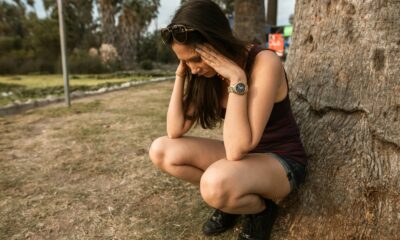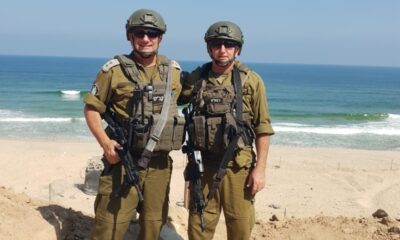
Israel
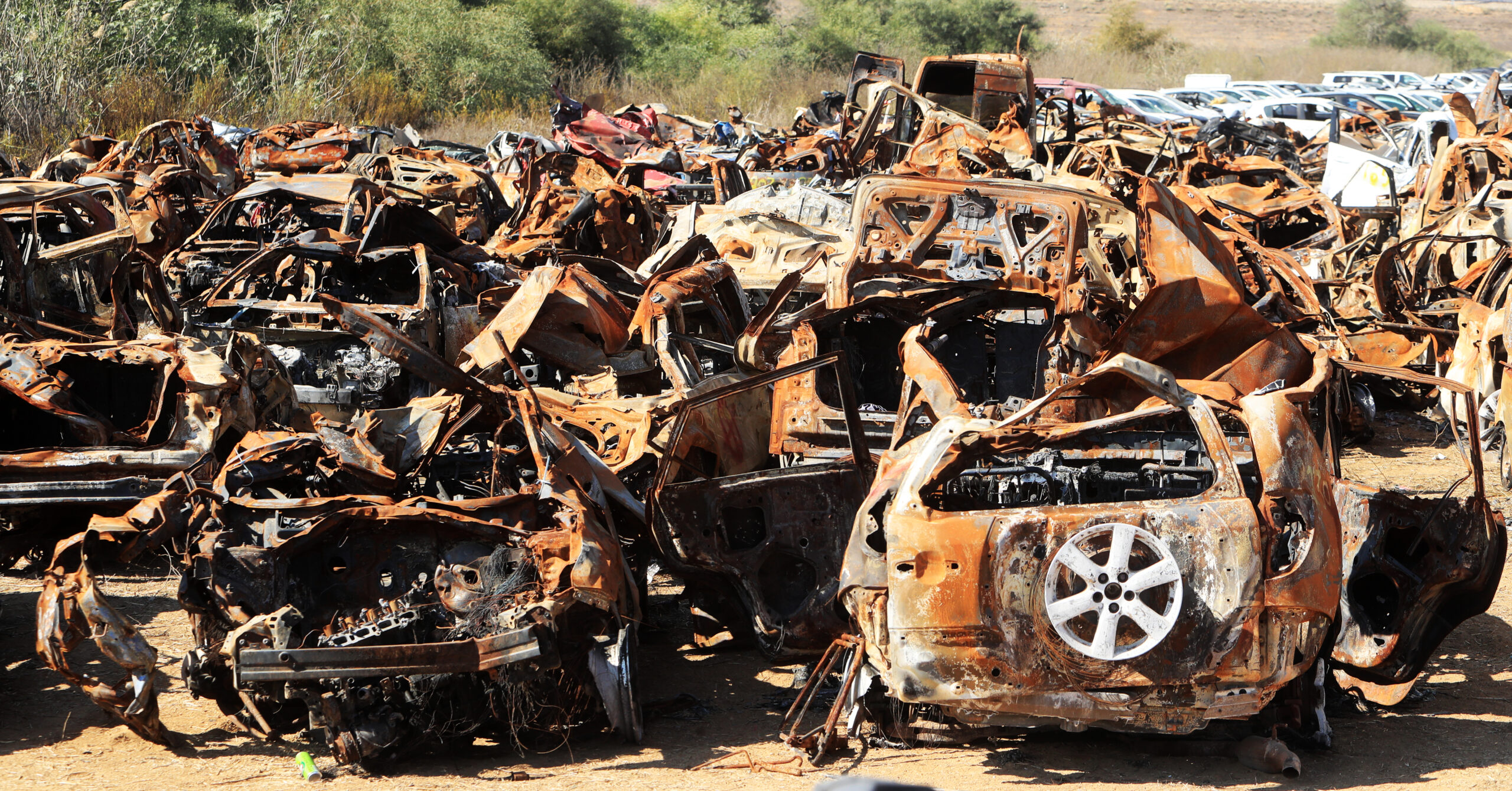
In the valley of the shadow of death
Warning: graphic content
It has been several days since I took a trip to the south of Israel to the areas targeted by Hamas terrorists on 7 October. Travelling down south with me was photojournalist Ilan Ossendryver, and in the 45-minute drive from Tel Aviv to Sderot, our first destination, we discussed how as journalists, we have an imperative to suspend emotions for the time being and cover the story at hand – especially the murder, torture, rapes, and kidnapping of our citizens. We would focus on our work, and deal with the emotions later. Until we reached Sderot.
Sderot is a town close to my heart. I visit there often, meeting delegations and briefing them about how the town is the most bunkered in the world, having endured rocket attacks from terror entities in the Gaza strip for decades.
Sderot is a veritable ghost town, the remaining residents evacuated as the Israel Defense Forces (IDF) and first responders station themselves in and around the town. In my mind’s eye, I pictured the events of 7 October, the terrorists storming around the traffic circle in the entrance to the town, murdering people on the street. I thought of those on their way to synagogue and the tour of elderly people headed to the Dead Sea before we saw the images of their slaughtered bodies – people going about their business only to be slaughtered without mercy.
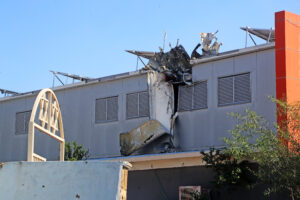
The evidence is everywhere. The buildings are pockmarked from bullets, shattered glass on the floor. Next to a synagogue the terrorists were aiming for, a rocket has caused damage to a roof. The sukkah still stands, a heart breaking reminder that this massacre took place on the last day of this joyous festival. Cars are full of bullet holes, windscreens shattered. We got to what remains of Sderot Police Station. I’ve been to the police station often to show delegations what used to be the “Museum of Rockets” – a bank displaying the different kind of rockets that were relentlessly fired towards Sderot. No matter when I went, a gracious, friendly officer was more than happy to speak to the groups. On 7 October, Hamas terrorists commandeered the police station, murdering the officers inside. The station was detonated to eliminate the terrorists. When I saw what remained of it, I fell apart. A lone Israeli flag and yahrtzeit candle stand there in mournful tribute. Several police officers arrived to pay tribute, the sadness etched in their eyes.
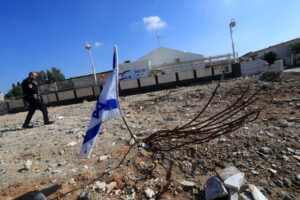
The air was punctuated every now and then by the whooshing sound of an Iron Dome interception and the loud bangs of tank artillery being fired onto Hamas targets in the Gaza strip.
Sderot has rocket shelters dotted around the town. When the red alert is sounded, residents have a matter of seconds to seek shelter. These shelters are small, designed to hold about 10 to 12 people. I thought of the revellers from the Supernova music festival, seeking shelter on that black Sabbath from the rockets and the terror, 20-40 cramming inside. Grenades were lobbed in and AK47s opened fire on these defenceless, terrified people by brutal barbarians. It was like a punch to the gut to realise just how vulnerable everyone was.
We drove further south towards Netivot. I looked at the road, the bomb shelters dotted around, and thought how it looked on that horrific day when bodies and burnt cars lined the roads in a testament to the carnage of the day.
We could see one of the decimated kibbutzim in the distance. Where picturesque houses once spoke of a vibrant community, all that’s left is a burnt-out husk that bore witness to the atrocities of the day.
We could see the plumes of smoke where the IDF were striking Hamas targets in the Gaza strip, hear the roar of the fighter jets above, and the loud whirr of the helicopter blades high up in the air.
We were driving to a place that I was dreading seeing but knew we had to. The importance of bearing witness has never been more crucial as the horrific trend of massacre denial grows. Then we saw it – the “car graveyard”, the place with all the burnt-out remains of cars that belonged to Supernova festival revellers or those from the kibbutzim.
I looked at these decimated vehicles, and each one told me a story about who owned them. The young, vibrant festival goers, dancing for peace until the break of dawn – the metaphor wasn’t lost on me; the peaceniks who lived on the kibbutzim – each one a story. My heart shattered. There were four young soldiers whom we spoke to and one told me that the faint stench I could smell wasn’t burnt metal, but flesh. Some of the owners of these cars were burnt alive in them or shot to death. I reeled. The cars screamed at me, “Tell our stories, tell the world what happened here!” One young soldier told me his car was also there. He was from Nahal Oz. he told me it was so important that the world understood the legitimacy of Israel’s military operations in Gaza. “We were all peaceniks,” he says, “Now, they must live their lives and we must live ours, but never again can they come into Israel. I want peace but we cannot live with these people, not anymore.”
On the drive home, accompanied by alerts of rockets fired on nearby Ashkelon, I tried to make sense of what I had seen in a place I know so well. Days later, I’m still struggling to process it all. I don’t think I ever will.







